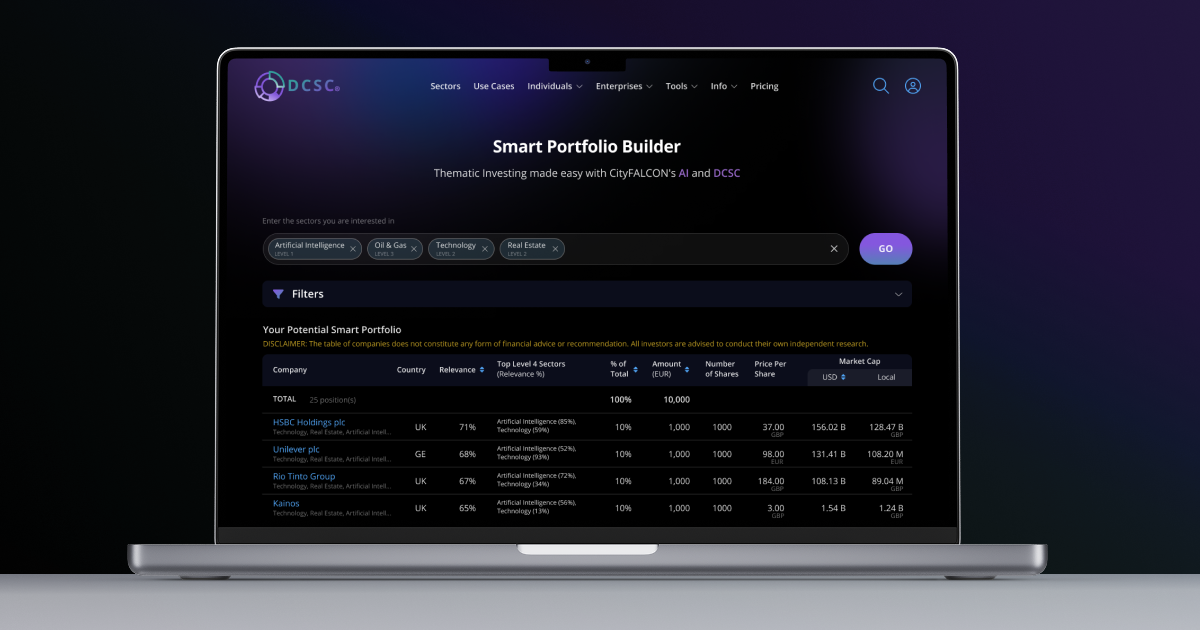
Sector classification systems are outdated, rigid, and fail to capture emerging industries, making them unreliable for modern investors and financial professionals. DCSC provides a dynamic, AI-driven approach, enabling better investment decisions.
Website
2024 - 2025, tackling challenges like resource limitations, R&D, and compliance with financial industry standards.
A UX/UI Designer in a team of three, responsible for ideation, user research, wireframing, prototyping, visual design, and collaboration with developers.
Traditional sector classification systems are outdated, rigid, and lack the ability to capture emerging industries. Dynamic Company Sector Classification (DCSC) offers a modern, AI-powered solution that provides dynamic insights for better investment decisions.
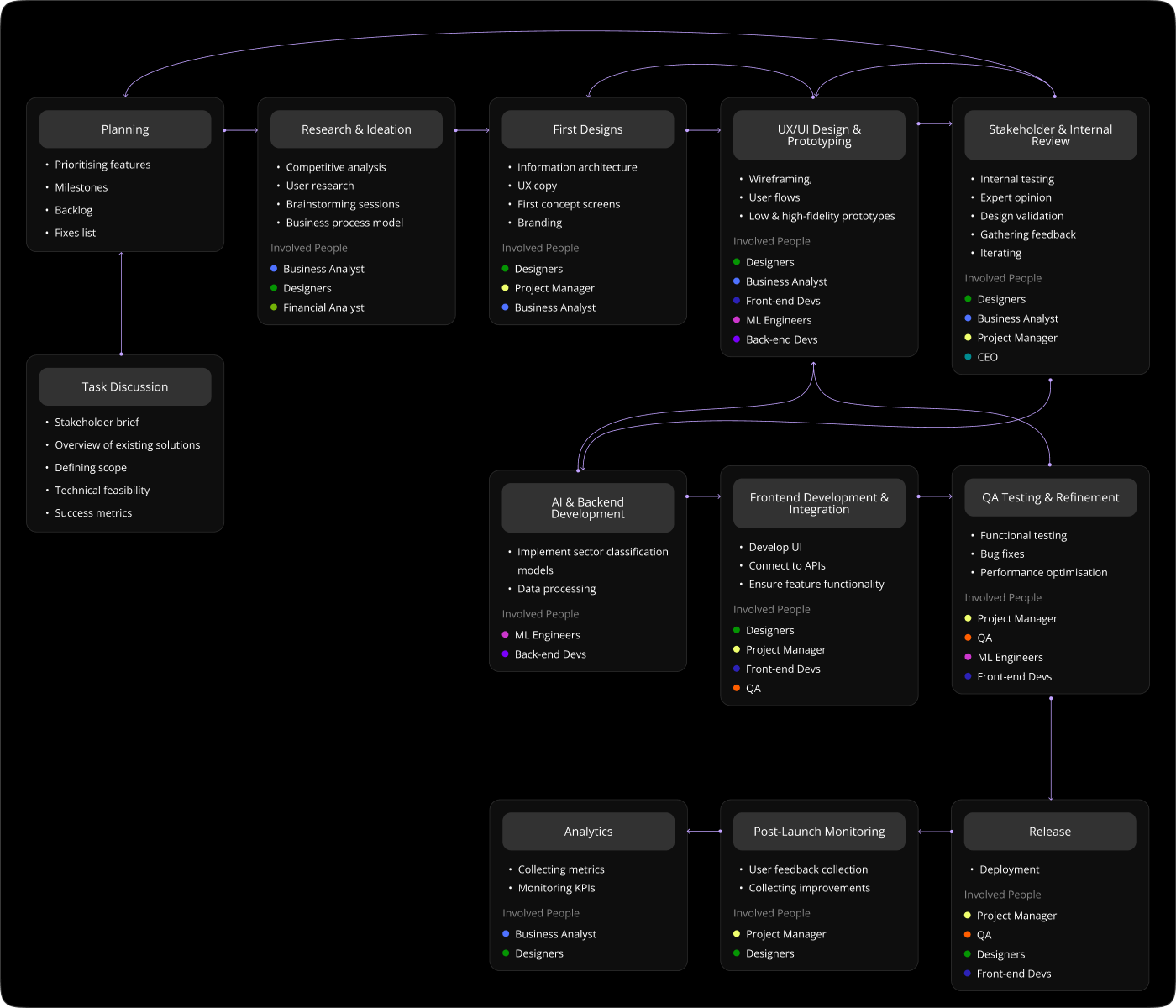
We mapped out pain points, defined user needs, and set clear business requirements while keeping constraints in mind.
Pain Points:
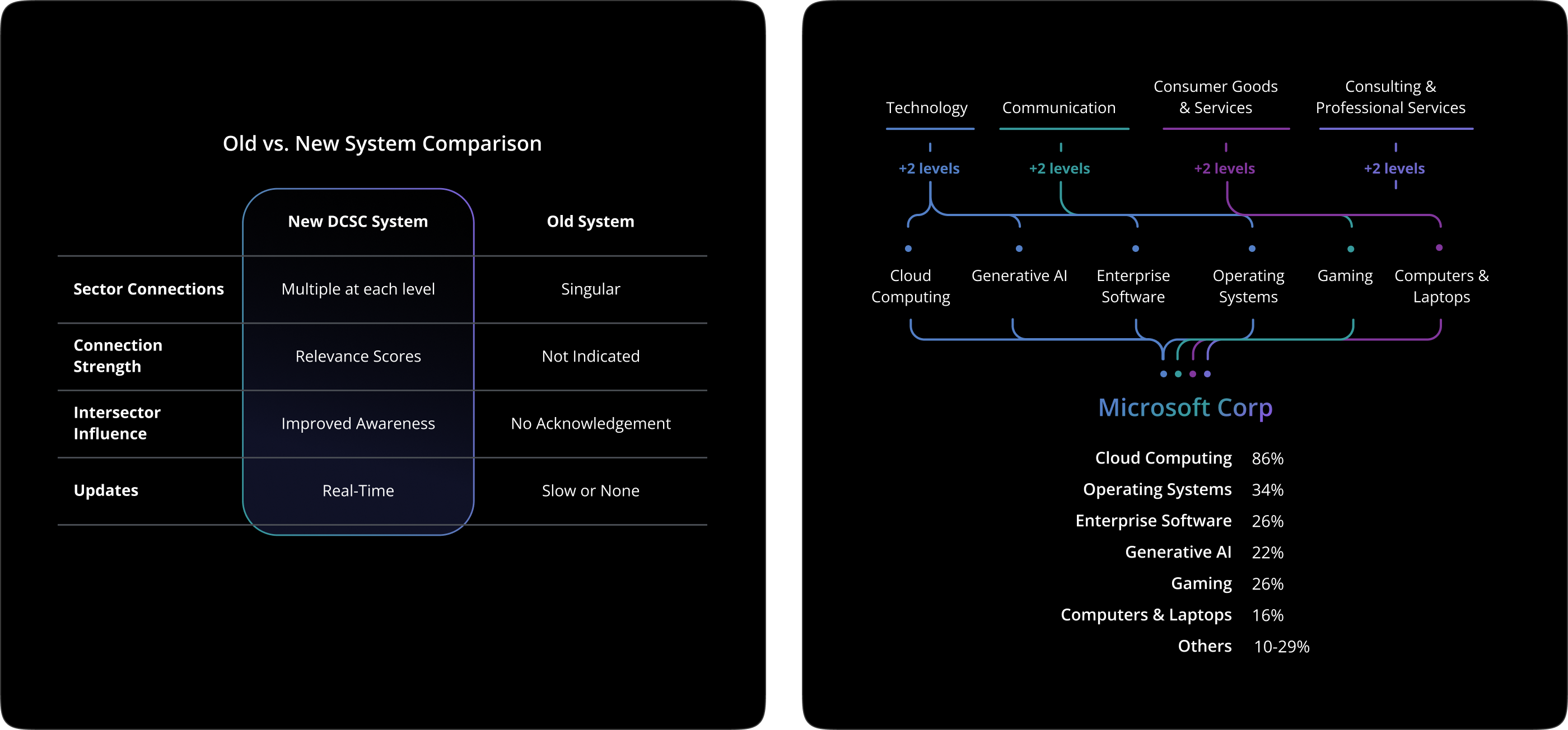
User Needs:
Business Requirements:
Constraints:
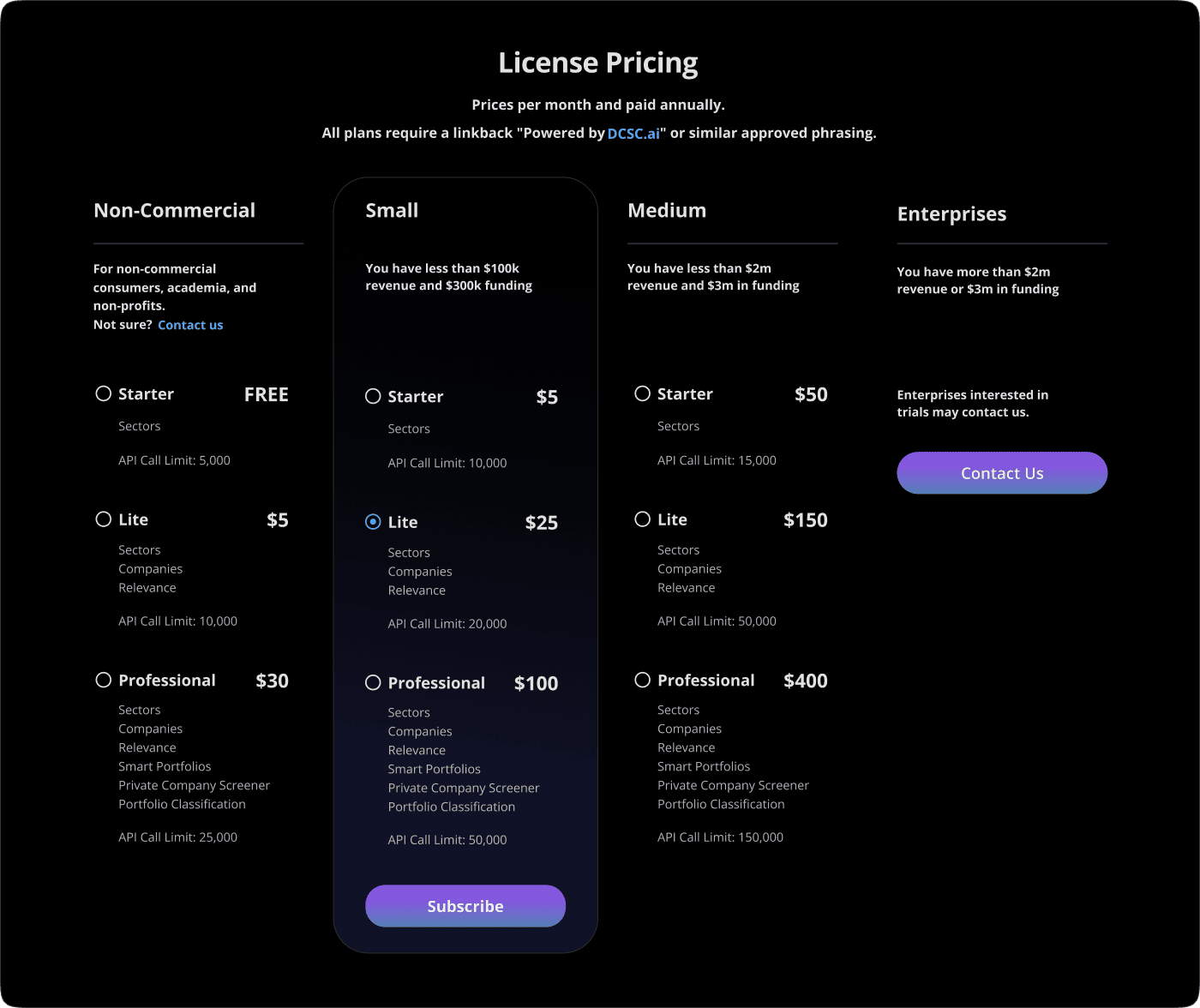
We created a clear pricing model to simplify plan comparison and drive conversions.
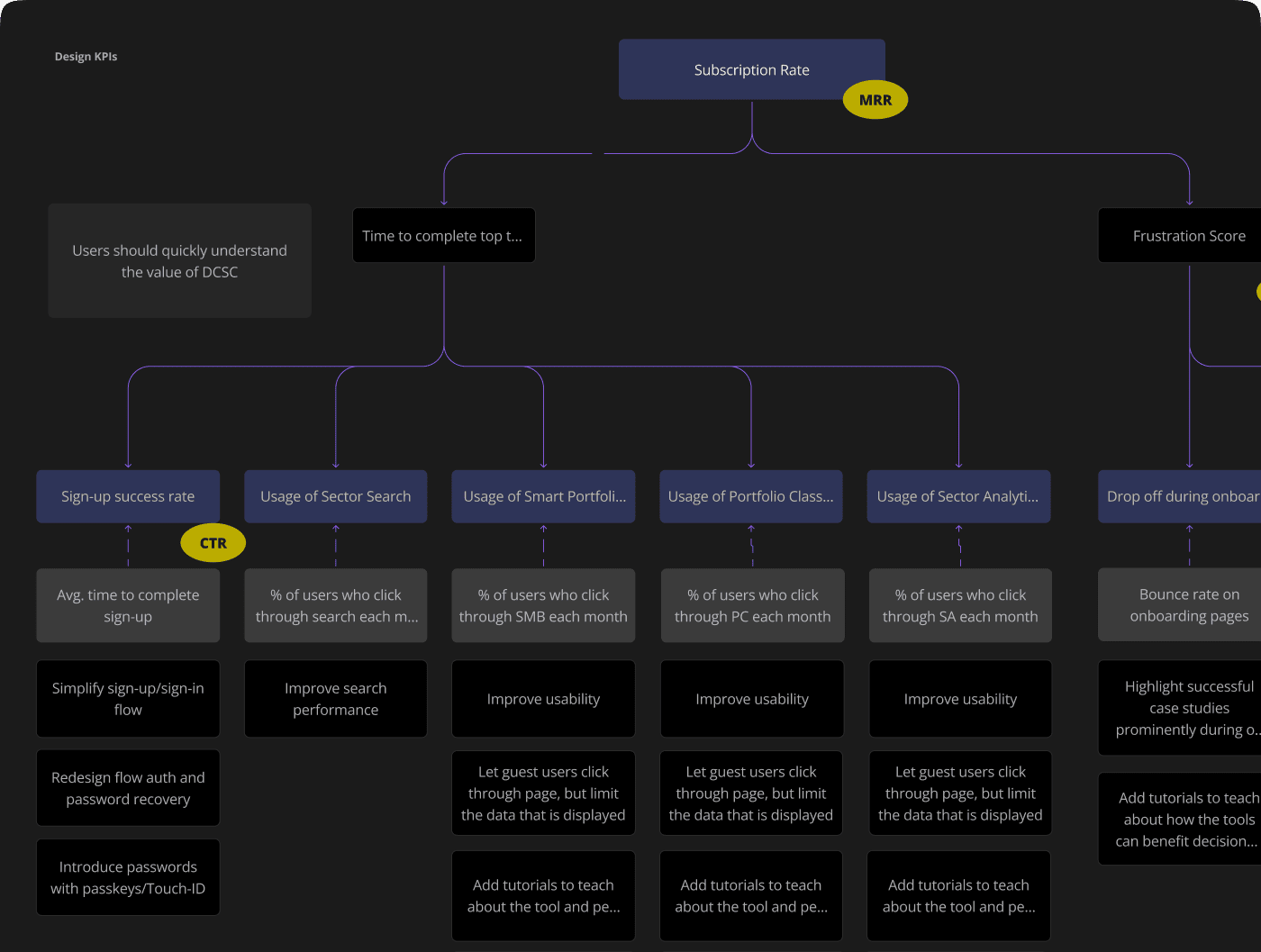
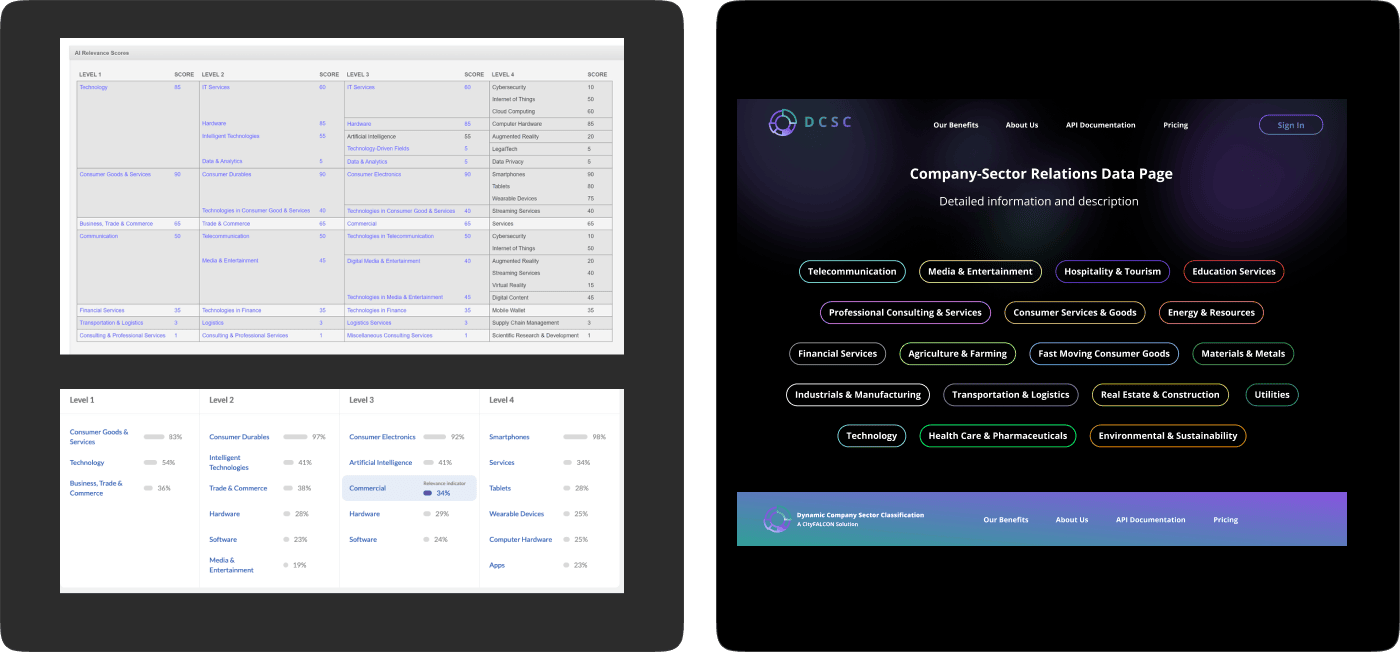
A tool allowing users to filter companies based on sectors, financial performance, and investment preferences.
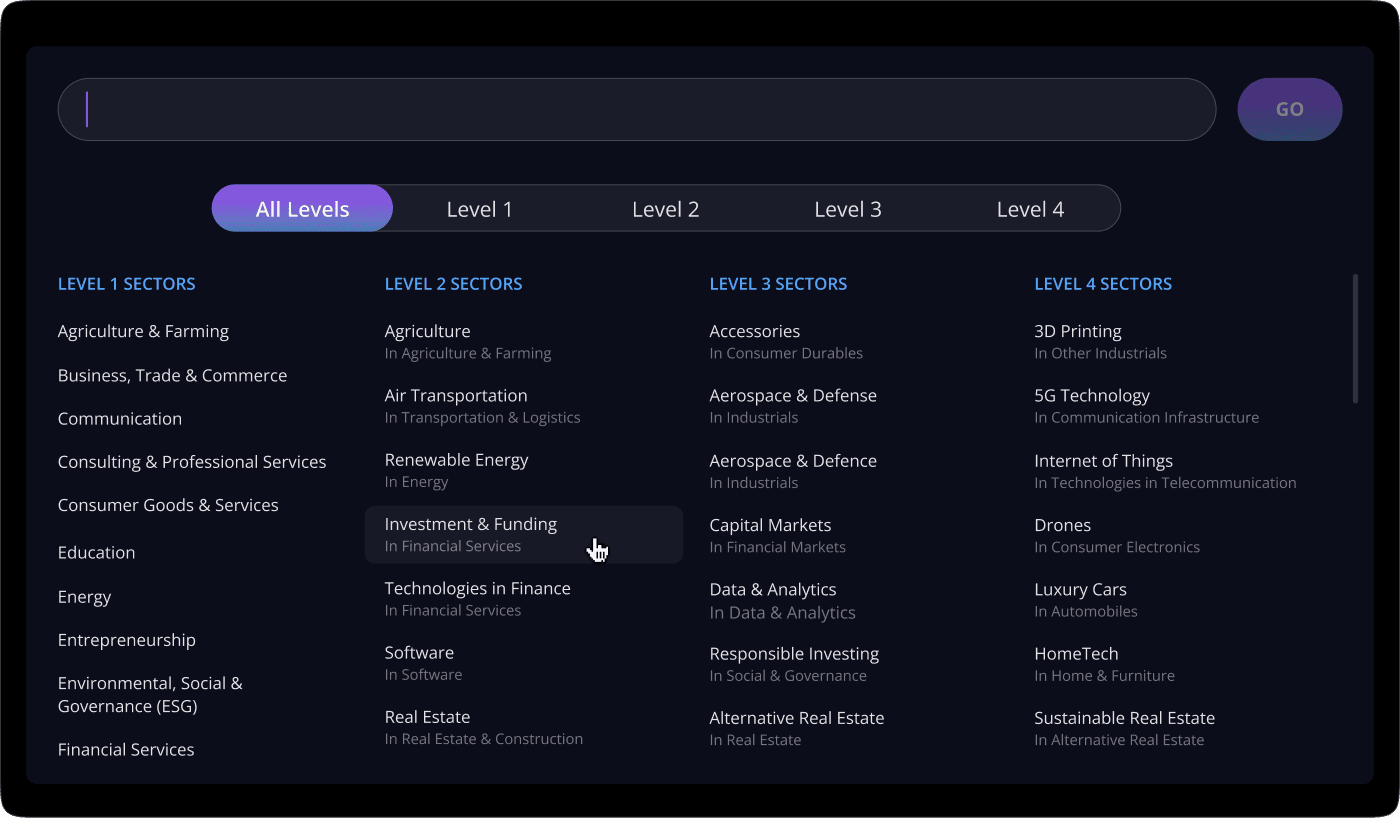
The Portfolio Classification Tool lets investors input their portfolio and instantly see how it’s distributed across sectors. It highlights how relevant each sector is to the selected companies, helping users spot gaps, understand diversification, and uncover missed opportunities. With built-in relevance scores and risk-performance insights, it’s a smart way to evaluate and optimize any investment strategy.
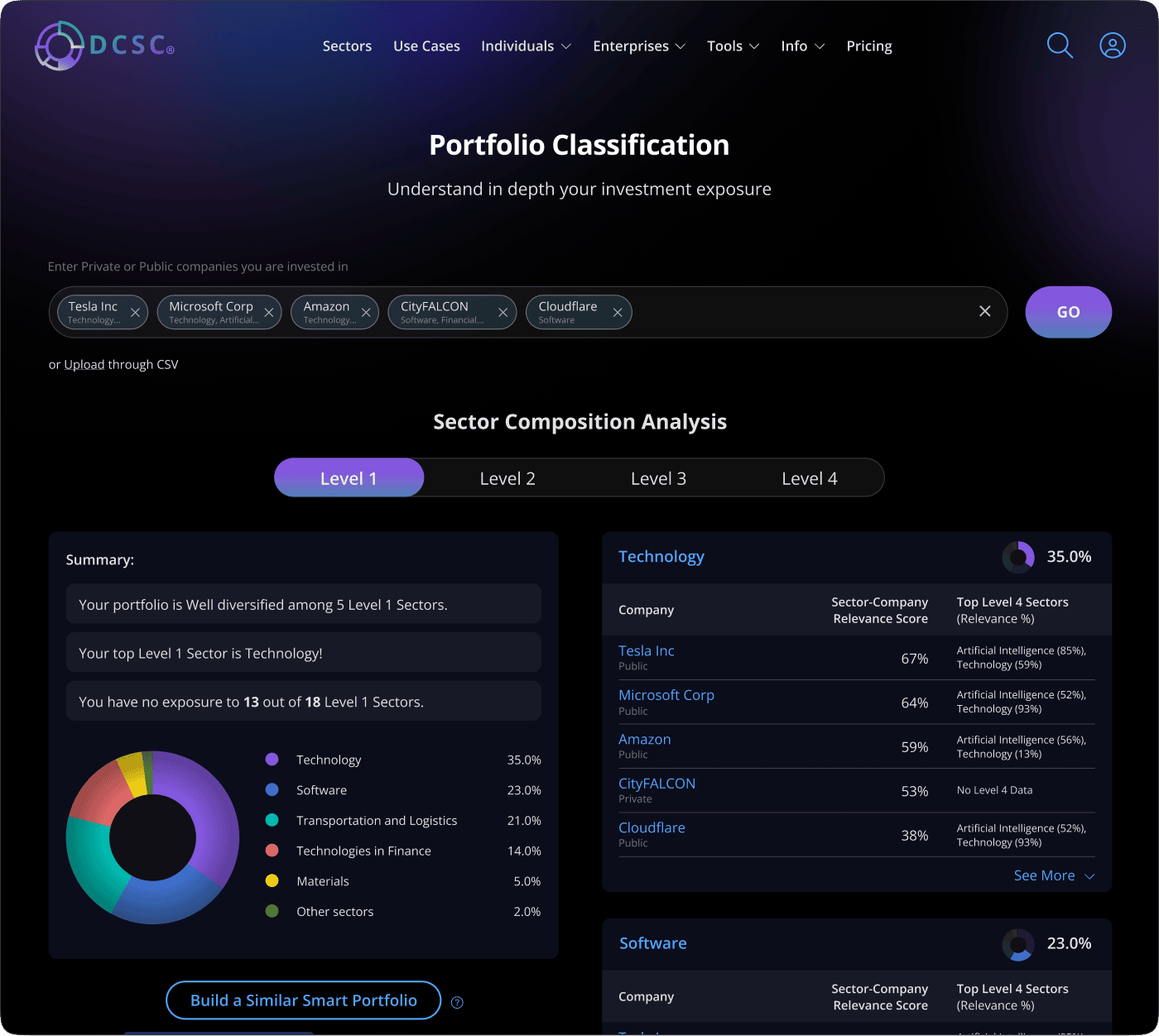
Designed widgets for:
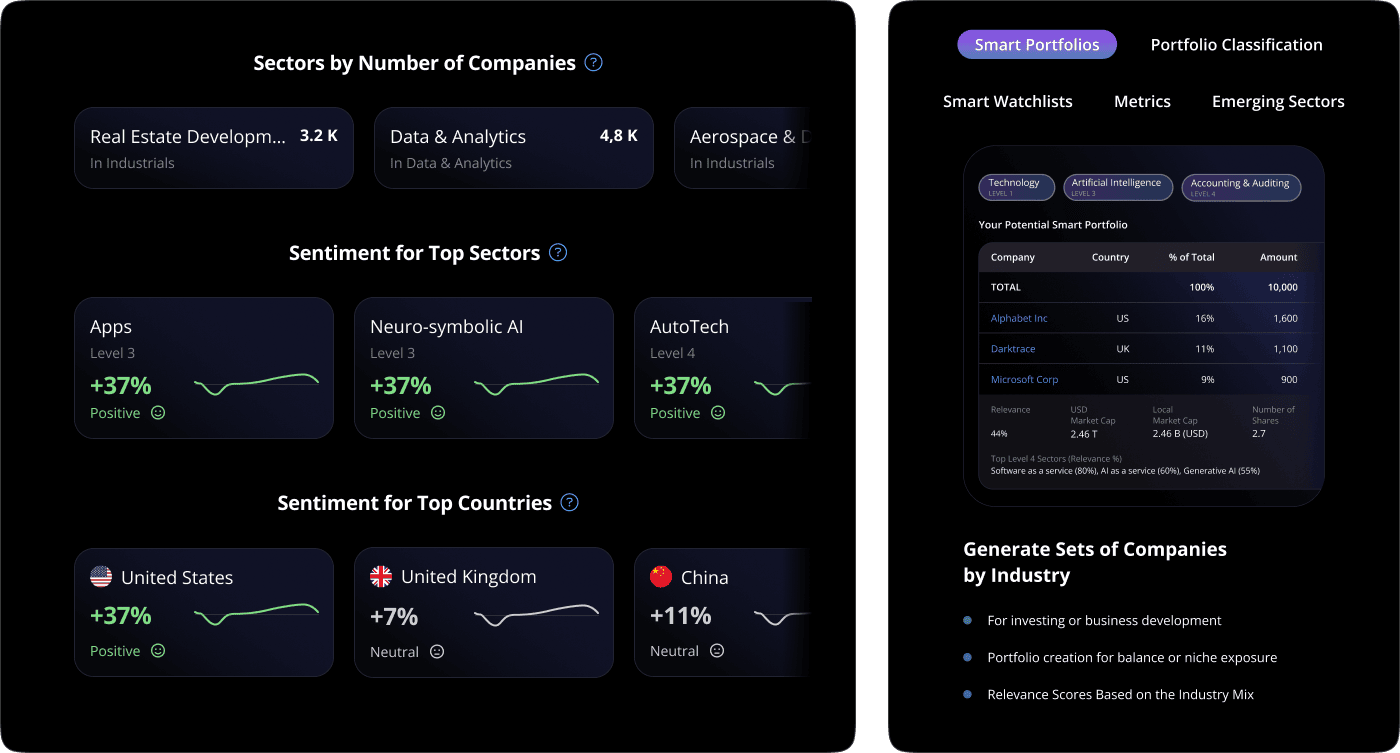
Developed a consistent design language to ensure clarity and accessibility.
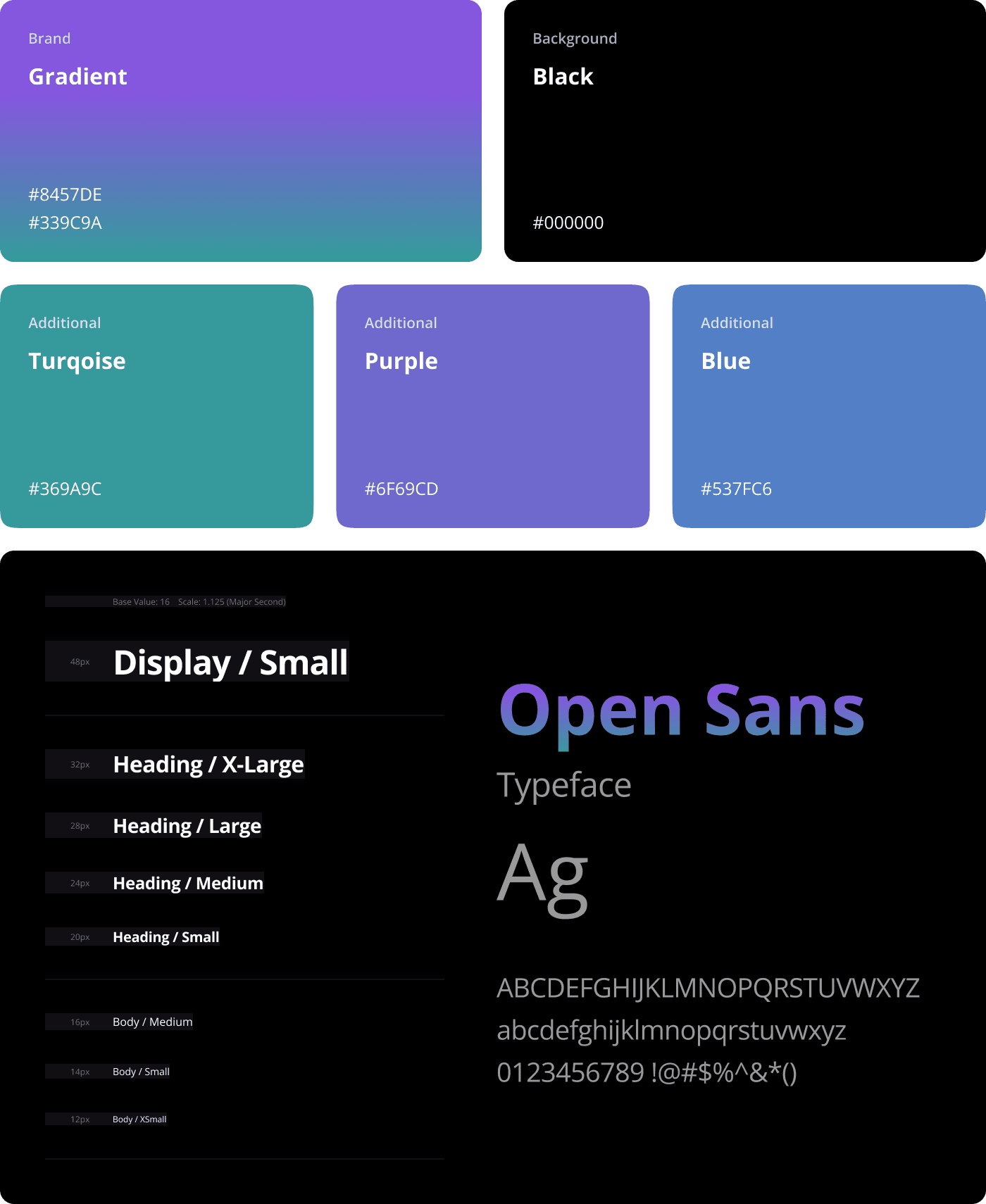

Built a structured sitemap to accommodate key features like:
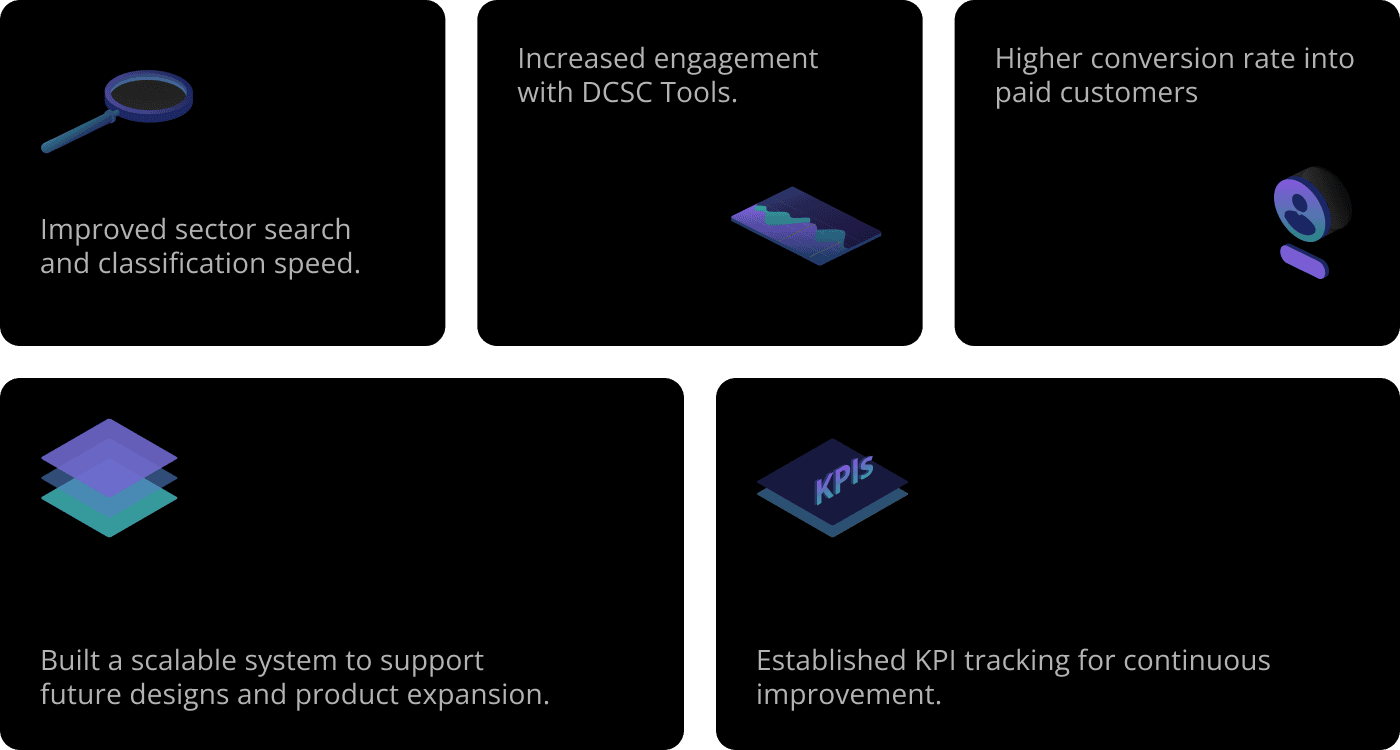

This project introduces DCSC, a dynamic, AI-driven sector classification platform that simplifies investing and portfolio management. By focusing on user needs, intuitive design, and business growth, we created a product that is both scalable and valuable to investors of all levels.

Sector classification systems are outdated, rigid, and fail to capture emerging industries, making them unreliable for modern investors and financial professionals. DCSC provides a dynamic, AI-driven approach, enabling better investment decisions.
Website
2024 - 2025, tackling challenges like resource limitations, R&D, and compliance with financial industry standards.
A UX/UI Designer in a team of three, responsible for ideation, user research, wireframing, prototyping, visual design, and collaboration with developers.
Traditional sector classification systems are outdated, rigid, and lack the ability to capture emerging industries. Dynamic Company Sector Classification (DCSC) offers a modern, AI-powered solution that provides dynamic insights for better investment decisions.

We mapped out pain points, defined user needs, and set clear business requirements while keeping constraints in mind.
Pain Points:

User Needs:
Business Requirements:
Constraints:

We created a clear pricing model to simplify plan comparison and drive conversions.


A tool allowing users to filter companies based on sectors, financial performance, and investment preferences.

The Portfolio Classification Tool lets investors input their portfolio and instantly see how it’s distributed across sectors. It highlights how relevant each sector is to the selected companies, helping users spot gaps, understand diversification, and uncover missed opportunities. With built-in relevance scores and risk-performance insights, it’s a smart way to evaluate and optimize any investment strategy.

Designed widgets for:

Developed a consistent design language to ensure clarity and accessibility.


Built a structured sitemap to accommodate key features like:


This project introduces DCSC, a dynamic, AI-driven sector classification platform that simplifies investing and portfolio management. By focusing on user needs, intuitive design, and business growth, we created a product that is both scalable and valuable to investors of all levels.